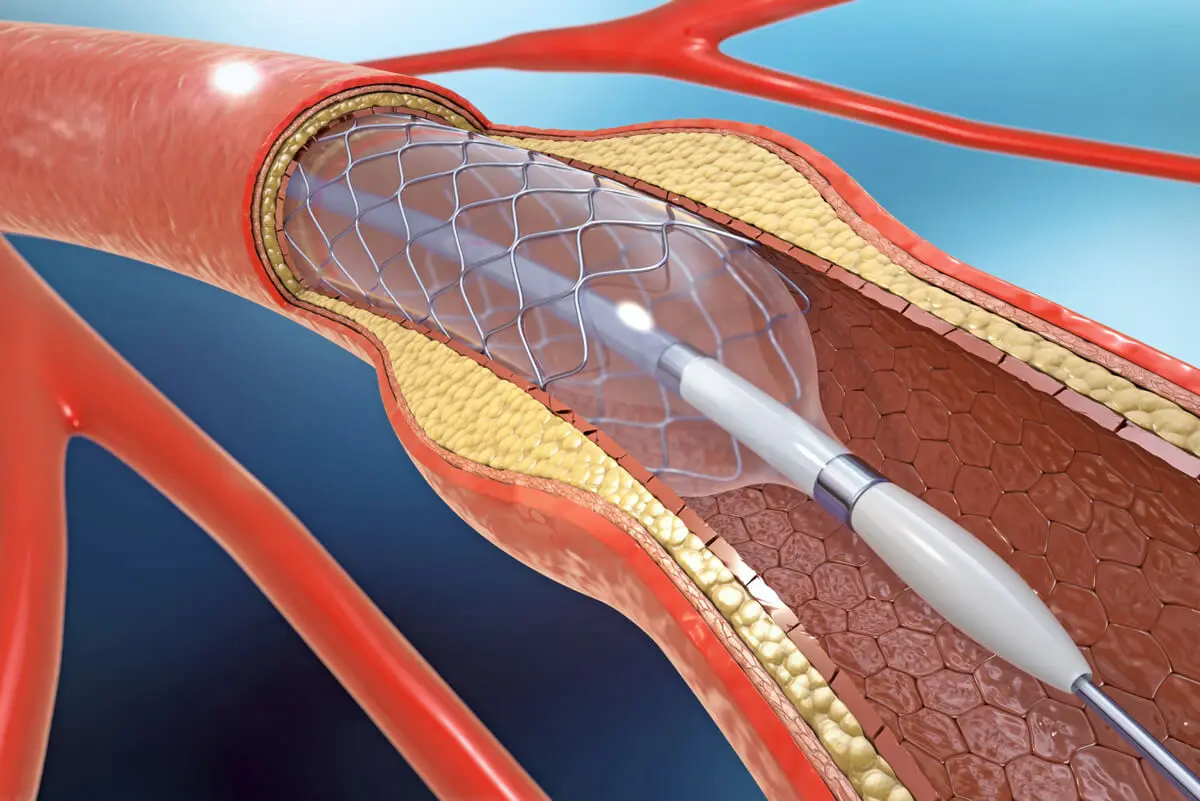Heart Disease: Everything You Need to Know


Written and verified by the doctor Leonardo Biolatto
Heart disease is often used together with cardiovascular pathology, although the truth is that the latter refers to the involvement of the blood vessels.
All of them are the main causes of death worldwide. However, most of them are preventable. Because of this, in this article we’ll explain everything you should know about heart diseases and how to prevent them.
What is heart disease?
Heart diseases are a heterogeneous group of pathologies that affect the heart, either structurally or in its functioning. They can also include certain vascular pathologies, such as the narrowing of the blood vessels.
Generally speaking, they’re usually divided into a number of groups. In the first place, we find those that consist of an alteration of the cardiac rhythm: arrhythmias. On the other hand, we have congenital heart defects, which are those present from birth.
Heart diseases also include structural anomalies. For example, valvulopathies (related to the heart valves) or cardiomyopathies (alteration of the heart muscle). The following is a basic explanation of three of the most relevant ones.

Arteriosclerosis
Arteriosclerosis is one of the most relevant risk factors for heart disease. It’s counted among the cardiovascular pathologies, and it’s important to highlight it, because it often causes serious complications.
This disorder consists of the arteries becoming stiff and thick. Thus, the blood flow to the body’s tissues is altered. Atherosclerosis, on the other hand, is a specific type of arteriosclerosis, although they aren’t the same thing. In this case, we’re referring to a hardening of the artery walls that aren’t formed by atheromatous plaques.
What usually happens is that atherosclerosis affects the coronary arteries. Thus, the heart stops receiving enough oxygen and nutrients it needs to function properly, due to fat and cholesterol plaques that obstruct it.
Angina pectoris and myocardial infarction
Both angina pectoris and heart attacks are pathologies closely related to atherosclerosis. They occur when there’s already a notable obstruction in the coronary arteries.
When the obstruction is partial, angina pectoris usually occurs. Intense pain appears, but it doesn’t reach infarction. The pain is located in the chest and disappears shortly after when the person rests.
In contrast, acute myocardial infarction is an intense pain that doesn’t subside with rest and shows there’s a lack of oxygen reaching the cardiac tissue. Ultimately, the result is cell necrosis. Infarction is one of the leading causes of death today.
How does heart disease develop?
The development of heart disease depends on many factors. In general, we can distinguish between congenital and acquired pathologies. Congenital are those that are present from birth.
Congenital defects are often the cause of arrhythmias and valvular heart disease. Acquired defects, on the other hand, are usually related to a series of risk factors and harmful habits.
For example, as explained in the Journal of Clinical Medicine, smoking, high blood pressure, and diabetes are determinants in their development. The same is true of other drugs, such as alcohol or cocaine, as well as stress and lack of exercise.
Some factors increase the risk of heart disease and we can’t do anything about them, such as aging and the passage of time. Infections and other metabolic diseases (such as hemochromatosis) may be related.
You may be interested in: How to Deal with a Heart Attack if You’re Alone
What are the signs of heart disease?
The symptoms of heart disease vary. It isn’t the same thing for the pathology to affect a blood vessel, such as atherosclerosis in a coronary artery, as it is for the heart rhythm to be changed. Therefore, we’ll explain in general terms what signs usually appear in each situation.
Firstly, when we speak of atherosclerosis, the symptoms are going to come from angina pectoris or a heart attack. In these cases, what predominates is intense chest pain and shortness of breath.
In addition, the pain may radiate to the jaw or an arm. However, it’s important to note that the symptoms aren’t the same in men and women. As explained by the Mayo Clinic, women are more likely to suffer from infrequent signs such as nausea, vomiting, or indigestion.
Arrhythmias are characterized by a feeling of palpitations or fluttering in the chest and general malaise. In many cases, dizziness and fainting occur, as well as lightheadedness.
Congenital heart defects, on the other hand, tend to produce difficulty in breathing and in performing physical activities. It’s usual for these people to suffer from edema in the legs or even in the abdomen. In the most severe cases, cyanosis can occur.
Find out more: Cardiovascular Risk: How Does Diet and Exercise Help?
How can heart disease be detected?
Thanks to advances in science and medicine, there are more and more ways to detect heart disease. In fact, in some cases, prenatal diagnosis is even possible. In this way, treatment can be started early and complications avoided.
The tests most commonly used in cardiology consultations are the electrocardiogram and cardiac catheterization. However, they aren’t the only ones. Computed tomography, magnetic resonance imaging, and stress testing can also be used.
Electrocardiogram
The electrocardiogram is usually the initial test for any possible cardiac pathology. This is because it’s a minimally invasive and low-cost procedure.
It allows the electrical signals produced in the heart to be recorded. Thus it’s possible to observe if there’s any abnormality in the rhythm or even in the structure.
Echocardiogram
An echocardiogram is also a non-invasive test that is frequently performed. It’s an ultrasound that allows the structure and function of the heart to be seen.
The Spanish Society of Cardiac Imaging (article in Spanish) explains that this technique can be combined with Doppler, which is very useful, especially after myocardial infarction. The doppler technique adds color to the dynamics of what is seen and it’s feasible to measure blood circulation with it.
Catheterization
Catheterization isn’t only a diagnostic test, but also allows the treatment of numerous cardiac diseases. It is especially useful in coronary artery atherosclerosis.
It consists of introducing a tube (catheter) through a vein or distal artery. This tube is guided to the heart, where the defect in question can be observed and even repaired. For example, by placing a stent to open the artery.
What surgeries help with heart disease?
Surgery is a very useful treatment modality for some heart diseases. In fact, in many cases, it’s the only definitive way to cure the condition. We’ll now explain some of the techniques that are usually used.
Atherectomy
Atherectomy is a procedure that allows the removal of atheroma plaque from the inside of the arteries. It’s performed by means of a catheter with a scalpel at the end, with a laser or sharp blade, which helps to destroy the plaque.
Angioplasty
Angioplasty consists of inserting a catheter with an inflatable balloon at the end. This catheter is placed in the obstructed vessel in question. The balloon is then inflated to increase the caliber of the artery. It’s a procedure that can even be performed on an outpatient basis.
Pacemaker
A pacemaker is an electronic device that helps regulate the heart rhythm. According to the Cardiovascular Institute of Buenos Aires (ICBA), it’s very useful in the treatment of arrhythmias and its placement has a low risk of complications.

Can children develop heart disease?
Children are also susceptible to heart disease. In fact, as we pointed out at the beginning, some of these pathologies are caused by congenital defects. In turn, these defects, if severe, usually manifest themselves in childhood.
For example, unusual communication between the different cardiac cavities. The same happens with congenital valvulopathies, which make the heart valves unable to function properly.
Some heart diseases can be prevented
We should always bear in mind that many heart diseases arise as a result of bad habits. For example, smoking, poor diet, or a sedentary lifestyle.
Therefore, ideally, we should try to act on these factors to reduce the risk of heart disease. Controlling stress and weight, and taking moderate exercise are essential measures. In addition, it’s important to consult a physician about any symptoms or doubts.
All cited sources were thoroughly reviewed by our team to ensure their quality, reliability, currency, and validity. The bibliography of this article was considered reliable and of academic or scientific accuracy.
- Enfermedades Cardiovasculares – Fundación Española del Corazón. (n.d.). Retrieved October 8, 2020, from https://fundaciondelcorazon.com/informacion-para-pacientes/enfermedades-cardiovasculares.html
- ICBA – Instituto Cardiovascular de Buenos Aires. (n.d.). Retrieved October 8, 2020, from https://www.icba.com.ar/pacientes/educacion-para-pacientes/enciclopedia/implante-de-marcapasos
- Rosas-Peralta, Martín, and Fause Attie. “Enfermedad cardiovascular: Primera causa de muerte en adultos de México y el mundo.” Archivos de cardiología de México 77.2 (2007): 91-93.
- Valentín Rodríguez, Aymara. “Cardiopatías congénitas en edad pediátrica, aspectos clínicos y epidemiológicos.” Revista Médica Electrónica 40.4 (2018): 1083-1099.
- Muñoz, D. Rodríguez, D. del Val Martín, and JL Zamorano Gómez. “Arritmias.” Medicine-Programa de Formación Médica Continuada Acreditado 12.38 (2017): 2263-2266.
- Eco-Doppler en las complicaciones de la cardiopatía isquémica. (n.d.). Retrieved October 8, 2020, from https://ecocardio.com/documentos/manual-ecocardiografia-basica/1187-eco-doppler-complicaciones-cardiopatia-isquemica.html
- Nau, Gerardo, and Julio Manuel Lewkowicz. “Angioplastia coronaria ambulatoria.” Rev Argent Cardiol 86 (2018): 186-193.
- de Oliveira Castro, Yana Thalita Barros, et al. “Conhecimento e significado do cateterismo cardíaco para pacientes cardiopatas.” Revista da Rede de Enfermagem do Nordeste 17.1 (2016): 29-35.
- Medrano, M. J., Cerrato, E., Boix, R., & Delgado-Rodríguez, M. (2005). Cardiovascular risk factors in Spanish population: Metaanalysis of cross-sectional studies. Medicina Clinica, 124(16), 606–612. https://doi.org/10.1157/13074389
- Enfermedades del corazón en las mujeres: Comprende los síntomas y factores de riesgo – Mayo Clinic. (n.d.). Retrieved October 8, 2020, from https://www.mayoclinic.org/es-es/diseases-conditions/heart-disease/in-depth/heart-disease/art-20046167
- Hernández Puentes, Yaimara Zunen. “Aterosclerosis y sistema aterométrico.” Revista Cubana de Medicina Militar 45.2 (2016): 183-194.
This text is provided for informational purposes only and does not replace consultation with a professional. If in doubt, consult your specialist.








